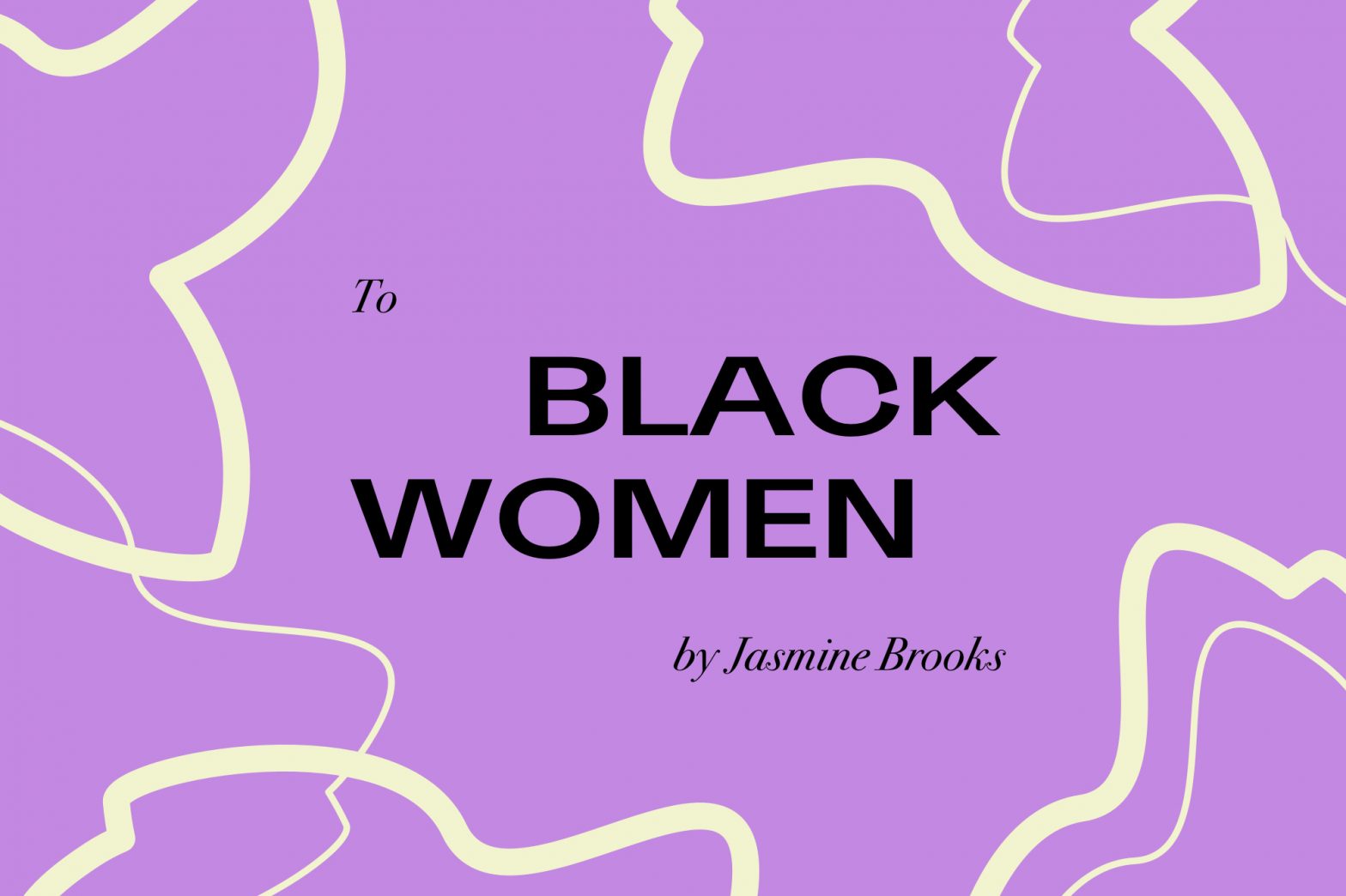I wrote this piece to create a space to talk about Black hair and biking. The topic may seem arbitrary to some who do not understand the history and legacy of Black hair. But know that our hair is our crown, who we are, and how we show up.
WRITTEN & ILLUSTRATED BY JASMINE BROOKS
FEATURED IN GET RAD BE RADICAL ISSUE 02
Jasmine
she/her · current hairstyle: natural curls, no heat
Avid road cyclist, long-distance and city commuting, Boulder Sunset Tri Sprint cycling finisher. Completed four centuries in the last year, intending to complete a total of ten in the next two years + explore what gravel biking has to offer!
Our hair often adds a complicated extra layer in cycling where Black people, specifically Black women, and nonbinary folks, are already struggling, or shall I say, actively working to be present and authentic in a space dominated by white men. I know I’m not the only one that grapples with this.
In this piece, I interviewed four incredible Black women from the Black Girls Do Bike community. I hope this helps create awareness around who we are and how we choose to show up and take up space in cycling communities while providing Black women with the courage to get out on their bikes.
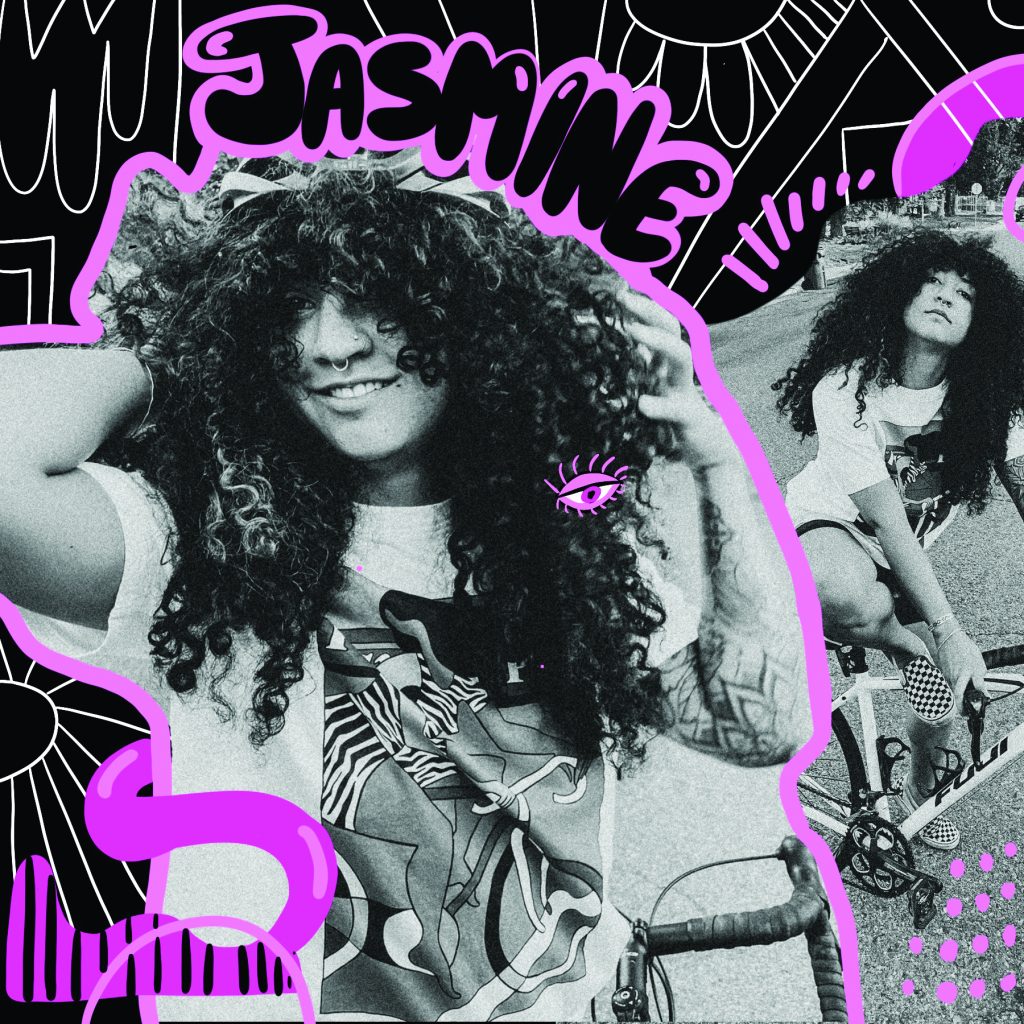
Brooke
she/her · current hairstyle: sew in / weave
Co-leader of Black Girls Do Bike Denver and co-leader of VIDA mountain bike series. In the summer of 2021, finished the Great Divide Mountain Bike Route, which is more than 2,600 mi and over 190,000 ft of elevation gain.
When I started my journey, mountain biking, in particular, I didn’t see many people like me. I felt like everybody looked a certain way. The reality of mountain biking didn’t look like the reality of my world. I guess it felt like a cult for white people, and that scared me. There were just lots of little microaggressions— people with the best intentions saying things that were sometimes really hurtful. I almost gave up.
Then out of nowhere, I start seeing all of this Black representation. I saw Ayesha McGowan at Colorado Classic. It meant so much to see a Black woman doing this, and from then on, I started seeing more and more Black folks represented. It just breathed life back into me; it was so amazing to see this representation and know I’m not the only one. I thought I got to get more Black women into this. I know they’re going to love it.
I think I’ve been on this journey with my hair that so many Black folks have been on, where we talk about hair with each other, but not with other folks that are not like us. I’ve become more and more comfortable with it. Still, I’ve always lived in a world where
nobody looks like me. In Colorado, I can’t go to the grocery store. I also can’t go to work without being the only Black person, which always comes with curiosity about my hair. I get nervous about that curiosity. There’s an opportunity to offend with that curiosity. But I think it’s an opportunity for us to show up as our authentic selves and be like, this is, this is who I am.
I have always worn a weave since I can remember. It was just so easy for me as an athlete, and that’s what I wanted. But also, I’m a person who likes a lot of flare. I like to wear makeup while biking; I am known for my red lipstick. I will put it on and get excited about style. I think these are all cultural aspects of me being a Black woman from the south.
I love to watch Black women go out there like who they are, and that’s the way I’ve shown up in my journey, and although my hair is false, it is my authentic self. I wouldn’t change it. For me, this weave is naturally me.

To Black Women
Every day, we get on our bikes, and we accomplish little things. Cycling is a lifelong journey, and you’re never done, but you can enjoy it whichever way you want.
We are all different cyclists in Black Girls Do Bike, and we all want to experience cycling differently. Some of us are racers, some are mountain bikers, some are road cyclists, some are gravel riders, and some of us are bikepackers. It’s the one thing that we all get to experience.
Separate, but always together.
DeAndra
she/her · current hairstyle: finger coils
Member of Black Girls Do Bike Denver. Ned Gravel, and Steamboat Springs Gravel finisher through Ride for Racial Justice.
I purchased a bike in May of 2020. I never thought I wanted a bike, but we were in quarantine, and I thought, should I? The gyms were closed, so I bought a bike, and I didn’t even think I would like it. At the same time, I thought I’d try and see how it went. Well, I fell in love with biking, and now that’s all I want to do.
Cycling in and of itself is tough as a Black woman, at least for me, because I don’t always have a bike group to go with. I live in a predominantly white neighborhood, so even the idea of going out on a bike path and being alone and not having protection is nerve-racking. But I’m learning because I’ve participated in two gravel races this year. So even in that arena, where often there are not many Black or Indigenous people represented, you search out groups like Black Girls Do Bike or Ride for Racial Justice. These groups are where you have allies to build sisterhoods and communities around cycling, which is important.
Having to create awareness around our hair is nothing new. Black hair is always trendsetting. Most Black women go to the stylist and get their hair done bi-weekly, monthly for sure. I mean, we’re always braiding our hair and switching it up to wear a wig or a weave or just trying to maintain our natural hair.
That is a big part of the pride of being a Black woman. We take pride in being versatile, and it’s important to talk about because these sports come with circumstances that sometimes impact how we maintain our hair and take care of it in different ways than we usually would. But having these conversations allows other Black women to be comfortable coming into a sport that they may not know much about.
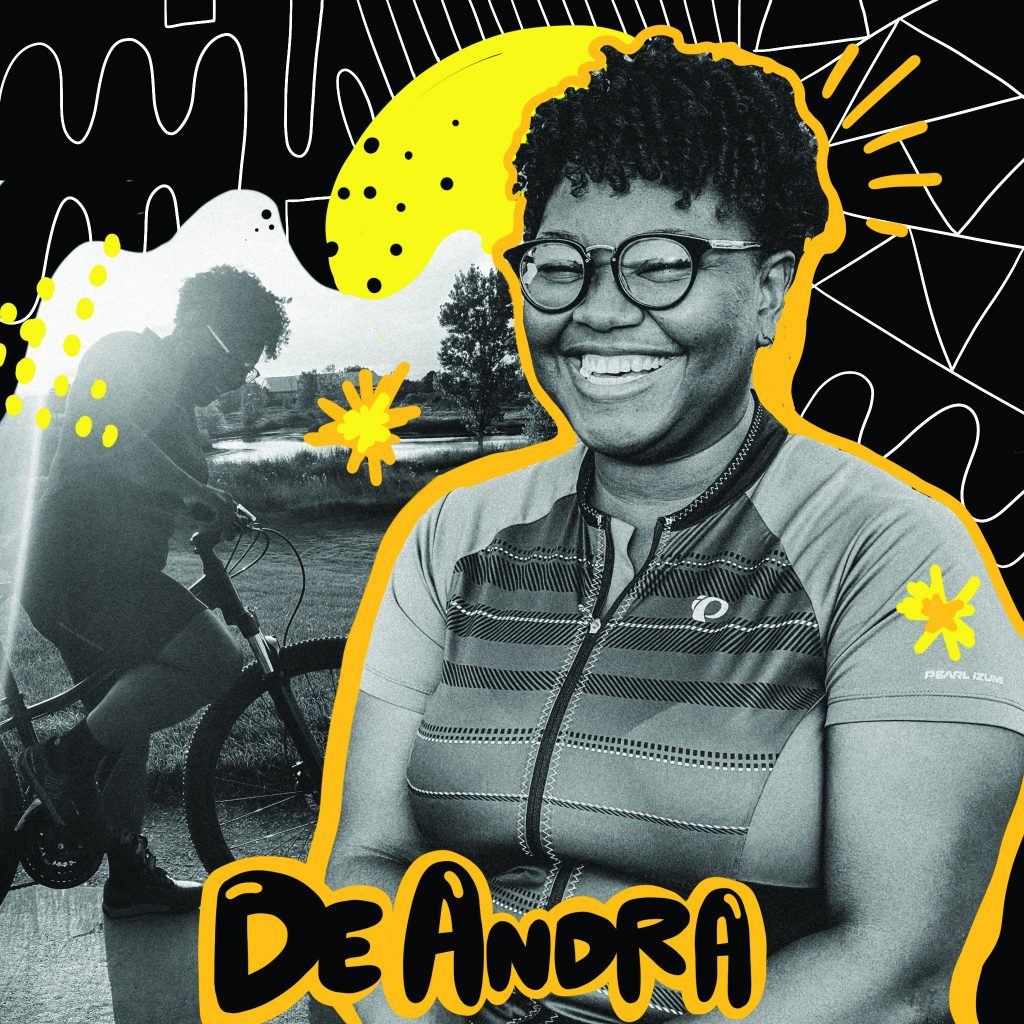
To Black Women
I never was athletic in general. Athleticism is not something that comes naturally, so cycling seemed overwhelming. But you can find your community. Find the people you identify with and see if that’s a comfortable fit for you. Meeting people can help you learn where to ride and what the do’s and don’ts are. Nine times out of ten, you will identify with one or two people that you can hang out with and go cycling with.
Get out there, enjoy it. It’s all part of learning and pushing out of your comfort zone.
Go for it.
Stephanie
she/her · current hairstyle: permed / relaxed
Founder of Black Girls Do Bike Denver Chapter. Trans America Trail finisher, potentially the first Black woman to do so.
I have always been in team sports, which made my relationship with hair very tricky. My hair is also related to being Dominican because, unfortunately, we are huge on venerating relaxers. It was very much like you don’t want anyone to see any volume. No curls, no flyaways, nothing. When I think of my childhood, I think about spending my Saturdays under the hairdryer. So I grew up perming my hair, and I still do for the same reason.
When it comes to cycling, it is still a little difficult because I have to fit my hair under a helmet. I have to make sure that the helmet doesn’t cause damage, that my sweat doesn’t ruin it, etc. At the same time, I try to find the right balance with maintenance and not make things any worse by virtue. There’s no reality where I have the luxury of doing nothing with my hair, so I have to be methodical.
Hair is huge, cultural, and meaningful to many Black people. Hair is a way for us to express ourselves. People need to know about our hair because it’s empowering. Hair can build inclusion by creating a space for people to ask questions. Hair can also bring self-confidence when exercising since it can be the norm for Black women, or women of color to avoid exercising of any kind because of hair issues. All of this can build more representation because if I see other people biking with hair like me, I know there are ways to manage it.
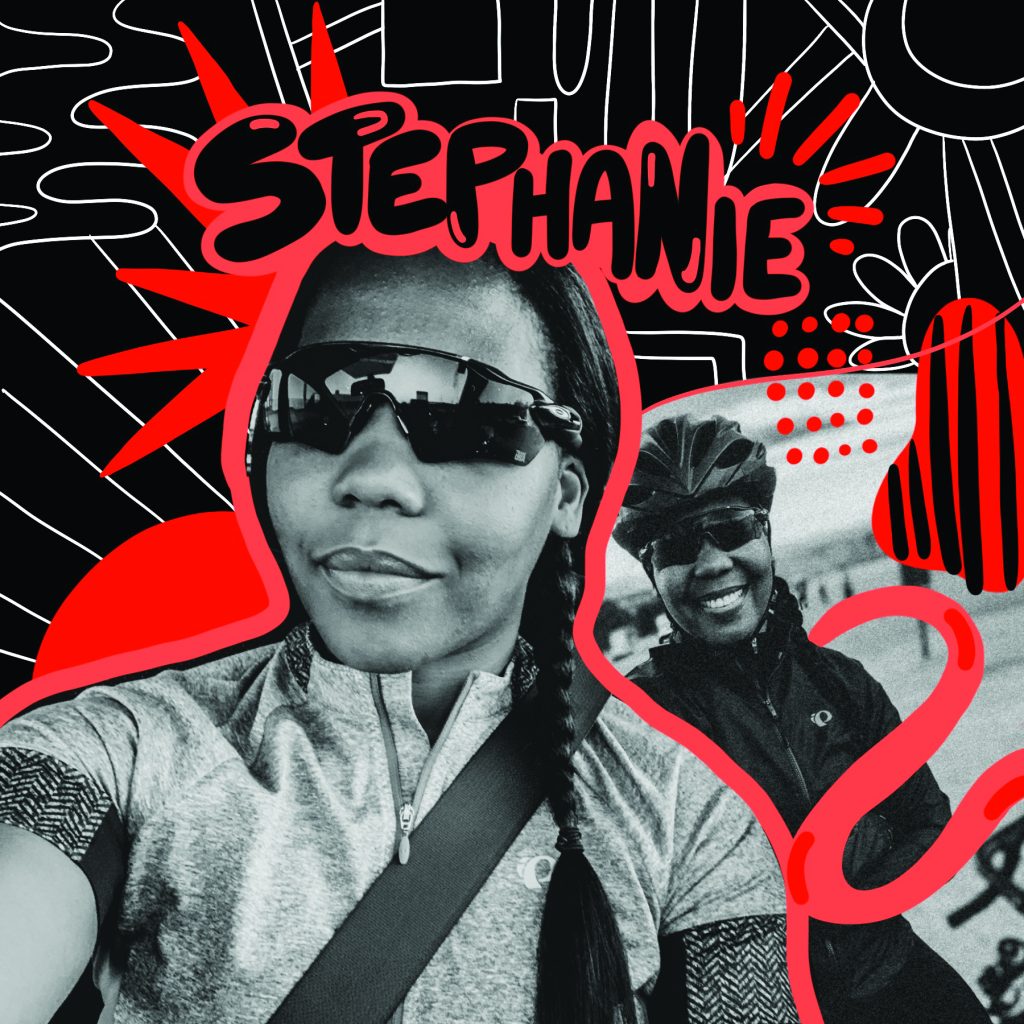
To Black Women
Cycling is absolutely for you. You belong in these spaces, and even if you do not feel represented or welcomed, know that you very much are. Look for folks who are already biking and learn about safety. Get the right gear, including a bike and apparel. Know where to ride and ride with others, which is particularly important for women, femme, and trans folks who are more vulnerable.
Also, know that there isn’t one way of doing things, which is what I like about cycling. There are sufficient domains that speak to people’s interests. Beyond that, there is so much joy and liberation, which is something that Black women are especially robbed of, just in our very existence. Cycling is beautiful to be a part of, and there are a lot of deeply rooted things that you can investigate being on two wheels.
Krystal
she/her · current hairstyle: natural curls, no heat
Co-leader of Black Girls Do Bike Denver and Outride Ambassador. Salsa Cycles sponsored athlete.
It’s interesting because you couldn’t pay me enough money to do a full marathon as a runner, but the idea of doing 90 miles on a bike, 100 miles on a bike, 120 miles on a bike, I wouldn’t flinch.
I’d be like, what are we doing?
How are we doing it?
How much food should I bring?
What’s the pace?
What’s the intention?
That’s kind of how the journey started. I thought it was amazing, and I was thriving.
At the same time, my relationship with my hair has evolved over time. We say “pelo bueno” or “pelo malo” in Spanish, referring to your texture. The looser your curls are means you have good hair. It was very challenging for my caretakers to manage my hair growing up, so they put relaxer in my hair at a very young age, and then I became very self-conscious about it.
In grade school and high school, I always tried to find a way to make my hair look like the white girls. There was a level of shame that came with it, and I think it was because I very much lived in a space where I felt like I needed to assimilate into white culture. Getting older, I started to get into fitness and running, and I couldn’t keep up with it anymore. I kept sweating my hair out. I lived out East, and there’s always humidity, so I always looked like a Furby. Eventually, I allowed natural growth to happen.
As it gets longer, my curls get tighter and tighter and tighter — my hair is halfway down my back. Now that my hair is healthy, the shrinkage is so much that I rarely tie my hair up anymore when I put my helmet on. I’ll put a big scrunchie in my hair and go!
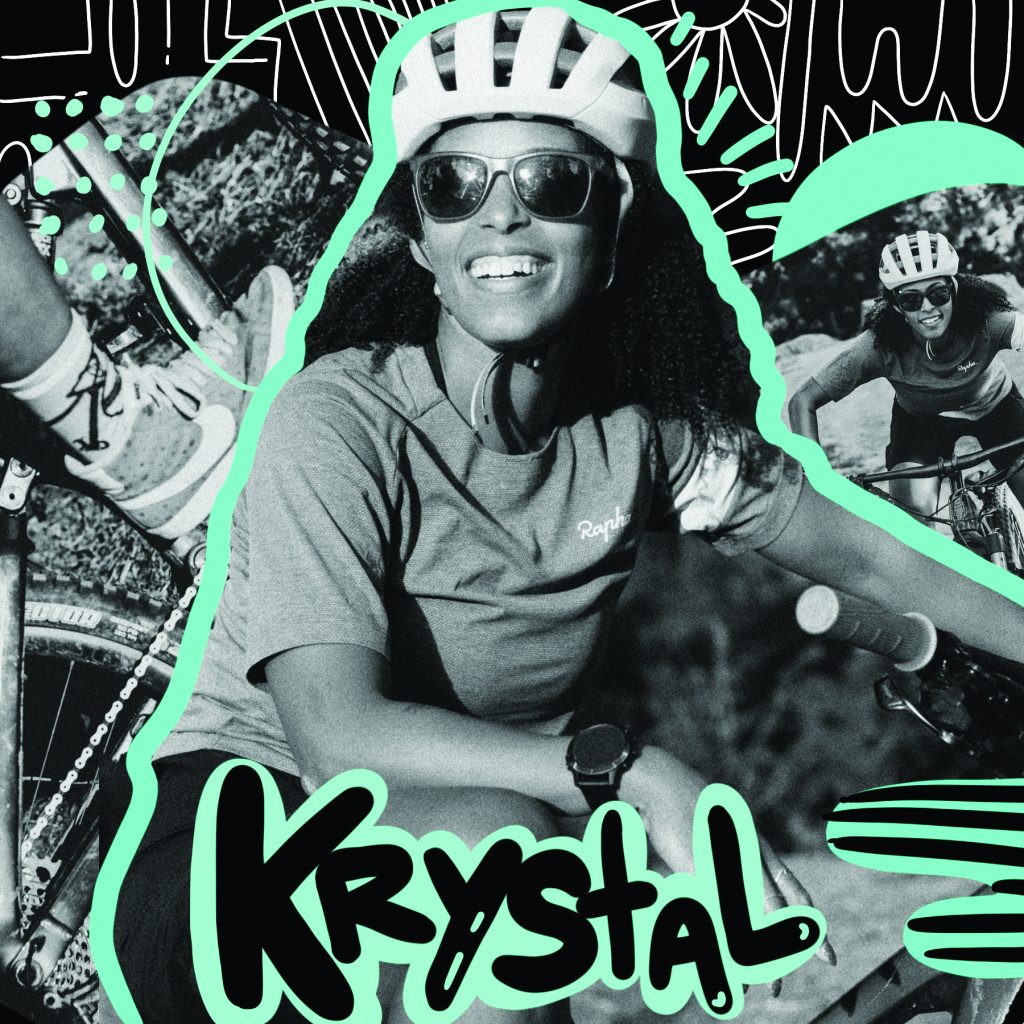
To Black Women

